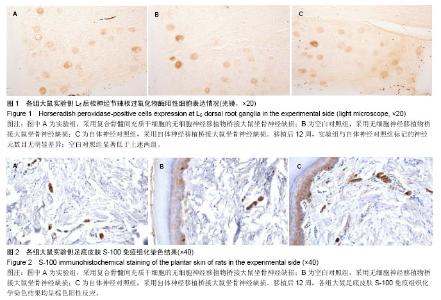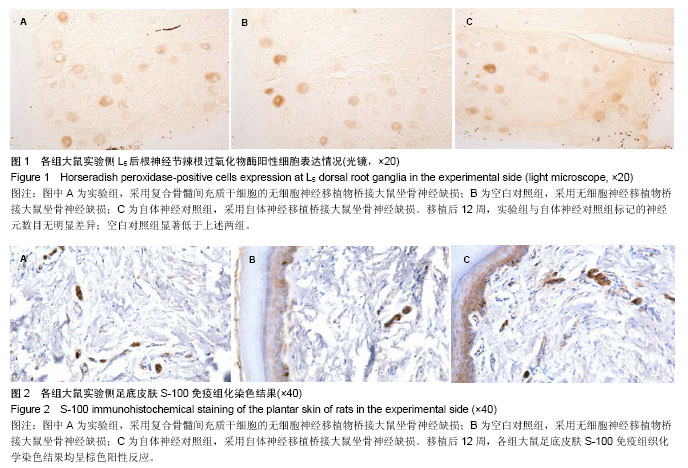| [1] Ultee J, Hundepool CA, Nijhuis TH, et al. Early posttraumatic psychological stress following peripheral nerve injury: a prospective study.J Plast Reconstr Aesthet Surg. 2013;66(10): 1316-1321.
[2] Quick TJ, Macquillan A, Sinisi M, et al. The examination and management of nerve injury in supracondylar fractures of the humerus. J Pediatr Orthop B. 2013;22(4):397-398.
[3] Dienstknecht T, Klein S, Vykoukal J, et al. Type I collagen nerve conduits for median nerve repairs in the forearm..J Hand Surg Am. 2013;38(6):1119-1124.
[4] Martins RS, Siqueira MG, Heise CO, et al. A prospective study comparing single and double fascicular transfer to restore elbow flexion after brachial plexus injury.Neurosurgery. 2013; 72(5):709-714.
[5] Lin YL, Jen JC, Hsu SH, et al. Sciatic nerve repair by microgrooved nerve conduits made of chitosan-gold nanocomposites. Surg Neurol. 2008;70 Suppl 1:S1:9-18.
[6] Yang Y, Ding F, Wu J, et al. Development and evaluation of silk fibroin-based nerve grafts used for peripheral nerve regeneration. Biomaterials. 2007;28(36):5526-5535.
[7] Dahlin LB, Lundborg G. Use of tubes in peripheral nerve repair. Neurosurg Clin N Am. 2001;12(2):341-352.
[8] Eren F, Yuksel F, Ulkur E, et al. Nerve regeneration through a healthy nerve trunk: a new and hopeful conduit for bridging nerve defects.Plast Reconstr Surg. 2005;116(6):1697-1705.
[9] Tzou CH, Aszmann OC, Frey M. Bridging peripheral nerve defects using a single-fascicle nerve graft. Plast Reconstr Surg. 2011;128(4):861-869.
[10] Siemionow M, Demir Y, Mukherjee AL.Repair of peripheral nerve defects with epineural sheath grafts. ,Ann Plast Surg. 2010;65(6):546-554.
[11] Ishikawa N, Suzuki Y, Ohta M, et al. Peripheral nerve regeneration through the space formed by a chitosan gel sponge.J Biomed Mater Res A. 2007;83(1):33-40.
[12] Karagoz H, Ulkur E, Uygur F, et al.Comparison of regeneration results of prefabricated nerve graft, autogenous nerve graft, and vein graft in repair of nerve defects. Microsurgery. 2009;29(2):138-143.
[13] Evans PJ,Mackinnon SE,Lev AD,et al.Cold preserved nerve allografts:changes in basement membrane, viability, immunogenicity and regeneration.Muscle Nerve. 1998;21(11): 1507-1511.
[14] 李建兵,姚建民,宋建良,等.放射照射对异体神经移植影响的实验研究[J].浙江临床医学,2000,2(4):222-224.
[15] Dumont CE, Hentz VR. Enhancement of axon growth by detergent-extracted nerve grafts.Transplantation. 1997;63(9): 1210-1215.
[16] Tang P, Kilic A, Konopka G, et al. Histologic and functional outcomes of nerve defects treated with acellular allograft versus cabled autograft in a rat model. Microsurgery. 2013; 33(6):460-467.
[17] Hudson TW, Zawko S, Deister C, et al.Optimized acellular nerve graft is immunologically tolerated and supports regeneration.Tissue Eng. 2004;10(11-12).
[18] Gao S, Zheng Y, Cai Q, et al.Comparison of morphology and biocompatibility of acellular nerve scaffolds processed by different chemical methods.J Mater Sci Mater Med. 2014; 25(5): 1283-1291.
[19] Wei AL, Liu SQ, Tao HY, et al.Repairing peripheral nerve defects with tissue engineered artificial nerves in rats.Chin J Traumatol. 2008;11(1):28-33.
[20] Yang Y, Ding F, Wu J, et al.Development and evaluation of silk fibroin-based nerve grafts used for peripheral nerve regeneration. Biomaterials. 2007;28(36):5526-5535.
[21] Szynkaruk M, Kemp SW, Wood MD, et al.Experimental and clinical evidence for use of decellularized nerve allografts in peripheral nerve gap reconstruction. Tissue Eng Part B Rev. 2013;19(1):83-96.
[22] Arai T, Lundborg G, Dahlin LB.Bioartificial nerve graft for bridging extended nerve defects in rat sciatic nerve based on resorbable guiding filaments. Scand J Plast Reconstr Surg Hand Surg. 2000;34(2):101-108.
[23] Tang X, Xue C, Wang Y,et al.Bridging peripheral nerve defects with a tissue engineered nerve graft composed of an in vitro cultured nerve equivalent and a silk fibroin-based scaffold. Biomaterials. 2012;33(15):3860-3867.
[24] 刘承吉,孙景致,佟晓杰,等.组织工程化天然神经支架的制备[J]. 解剖科学进展,2003,9(3):197-200.
[25] 张彩顺,吕刚.扫描电镜观察组织工程神经支架与骨髓间充质干细胞的共同培养[J].中国组织工程研究与临床康复, 2007,11(20): 3988-3900.
[26] 佟晓杰,刘承吉,张彩顺,等.脱细胞同种异体神经移植物修复大鼠坐骨神经缺损的实验研究[J]. 解剖学报,2004,35(3):230-233.
[27] Zhang CS, Lv G. Repair of sciatic nerve defects using tissue engineered nerves. Neur Regener Res. 2013;8(21):1985-1994.
[28] Sondell M, Lundborg G, Kanje M. Regeneration of the rat sciatic nerve into allografts made acellular through chemical extraction.Brain Res. 1998;795(1-2):44-54.
[29] 李晓峰,赵劲民,苏伟,等.大鼠骨髓间充质干细胞的培养与鉴定[J]. 中国组织工程研究与临床康复,2011,15(10):1721-1728.
[30] 张烽,顾玉东,徐建光.大鼠坐骨神经损伤后神经元细胞凋亡的初步观察[J].中华手外科杂志,2000,16(1):53-55.
[31] Fine EG, Decosterd I,Papaloizos M,et al.GDNF and NGF released by synthetic guideance channels support sciatic nerve regeneration across a long gap. Eur J Neurosci. 2002; 15:589-601. |

